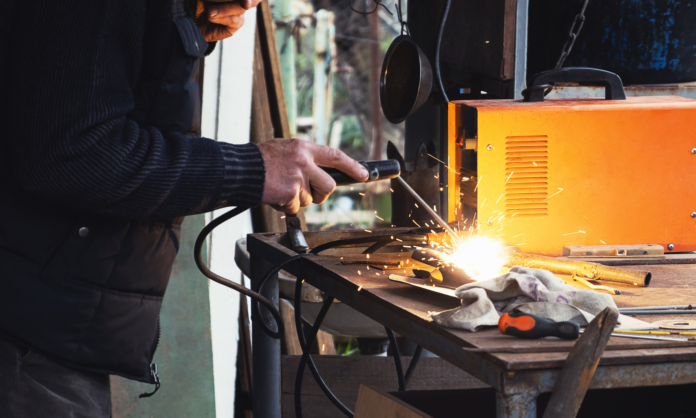Table of Contents
With great power tools comes great power consumption, and understanding how much energy your welding machine is guzzling is crucial for budgeting, setting up your workshop, and even choosing the right power source. Here, we break down the power needs of your welding machine to clear up the sometimes murky waters of electricity and welding.
Calculating the Power Consumption of a Welding Machine
Welding machines don’t always make it as easy as listing the watts it needs somewhere on the packaging or plate. But there’s a reason for this – the wattage requirements can vary based on whether the plug is 120 or 240 volts and what process you’re using the machine for.
To start with the basics, power consumption is typically measured in watts (W). The formula for this is simple yet crucial, using volts and amps:
Power (in Watts) = Voltage (in Volts) x Current (in Amperes)
Volts and amps should be listed on your machine’s user manual or sometimes on the equipment itself.
For a standard 120V household circuit, a 120V welder will use 120V x (Welder’s Amperage). A 240V machine would use 240V x (Welder’s Amperage). For a 120-volt welder drawing 15 amps, that’s 1800W. For a 240-volt welder drawing 30 amps, you’ve got a hefty 7,200W.
Note that this measurement is for continuous watts, and there may be higher peak watts, such as when turning on the device, that you’ll also need to consider.
Sometimes, startup watts are listed on a device’s spec sheet. But, if they aren’t, adding 30% from the machine’s running watts is a good idea to gauge how much more power it might need to turn on.
For example, if we’re looking at the wattage needed for a machine at the highest voltage of 240 volts (7200W), we can multiply it by 1.3 to get the starting watts.
7200W x 1.3 = 9360W
Now you know that the generator used to run your welding machine must meet the requirements of 9360 starting wattage and 7200 running wattage.
The EcoFlow DELTA Series Portable Power Stations would work well for most welding machines. The EcoFlow DELTA Pro, with 3600W of continuous output and 7200W for startup, would be able to handle the above welding machine at a lower voltage of 120 volts. To run your machine longer, add one or two of the EcoFlow DELTA Pro Smart Extra Battery to reach up to 10,800Wh of storage capacity.
Factors That Affect Power Consumption of Welding Machines
There are several variables affecting the power consumption of welding machines.
Type of Welding
Different welding processes and techniques have different power needs. For instance, TIG (Tungsten Inert Gas) welding typically requires less energy than MIG (Metal Inert Gas) because it uses a low-current arc and a non-consumable electrode. Stick welding requires more energy because it requires a higher current of electricity to produce stable heat.
Material Thickness
The thickness of the welded material will affect the voltage and amperage needed, influencing the energy consumption. Thicker metals will require more energy to heat and fuse them properly, so you may need a unit with a higher power rating.
Duty Cycle Rating
The duty cycle rating is a significant influencer of power usage, as it can denote a machine’s ability to handle sustained high usage without overheating. The rating is a percentage of time the machine can be used within 10 minutes before needing to cool down. A higher duty cycle translates to higher energy consumption.
Machine Efficiency
The efficiency of your welding machine itself can play a role in its power consumption. Newer machines with higher efficiency transformers will consume less energy, requiring less output.
Frequently Asked Questions
It all depends on the specific machine and the settings you’re using at the time. The formula to understand the power consumption of a welding machine is Power (Watts) = Voltage (Volts) x Current (Amps). You can calculate wattage using the voltage and current specified in the user’s manual.
Final Thoughts
Understanding the power needs of your welding machine helps you manage your workshop’s energy usage and can improve the quality of your work and the lifespan of your tools. The correct power source is just as crucial as the tool itself. Consider flexible options like EcoFlow’s portable power stations, which provide clean, reliable power no matter where your welding projects take you.
